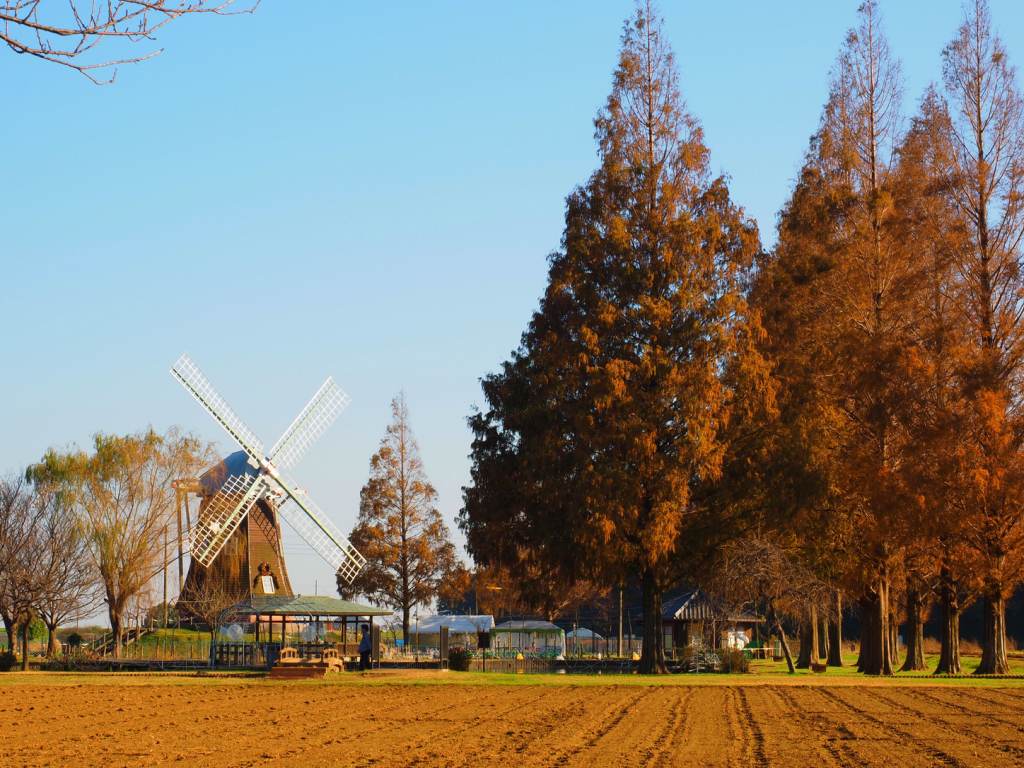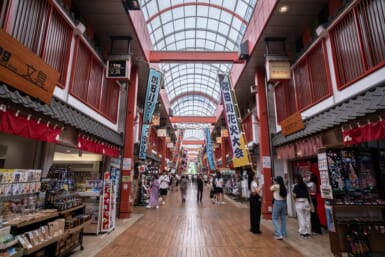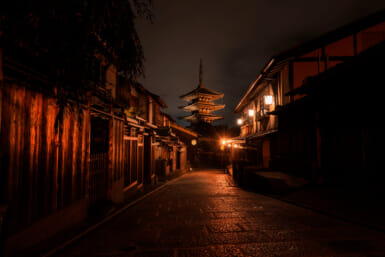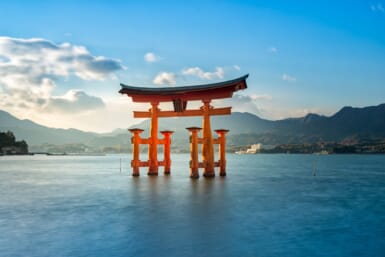Located adjacent to Tokyo, Chiba Prefecture is home not just to Disney resorts and Narita International Airport, but also to breathtaking natural wonders, including valleys, waterfalls and caves. Its beauty shows both inland and by the sea from its spacious parks and Mount Nokogiri to Kujukuri Beach, Japan’s longest stretch of sandy coastline. It proves a worthwhile visit in the autumn when the colorful leaves transform the beautiful landscapes into new scenes. Here are some of the best places to see the fall foliage in Chiba.
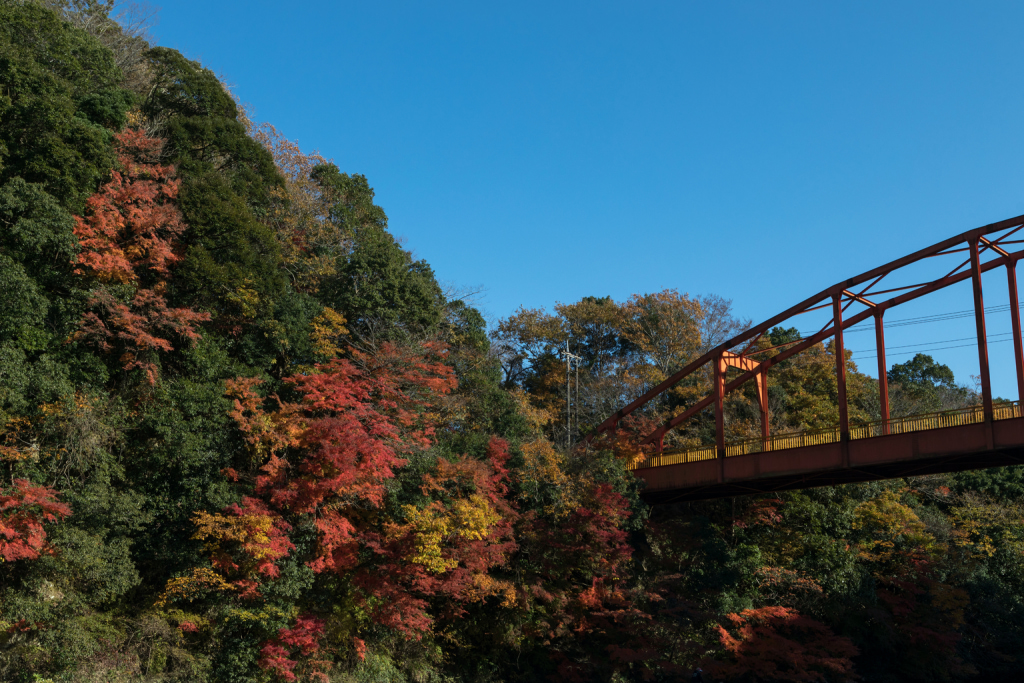
Lake Kameyama
1. Lake Kameyama (Kimitsu)
As the largest artificial lake in Chiba prefecture, this popular sightseeing location gives visitors a chance to hike, fish and ride in boats while surrounded by the fall foliage. There are even sightseeing boats for visitors who want to experience a fall foliage cruise. The brilliant colors of the leaves are reflected on the clear surface of the lake.
Best time to go: Late November and early December
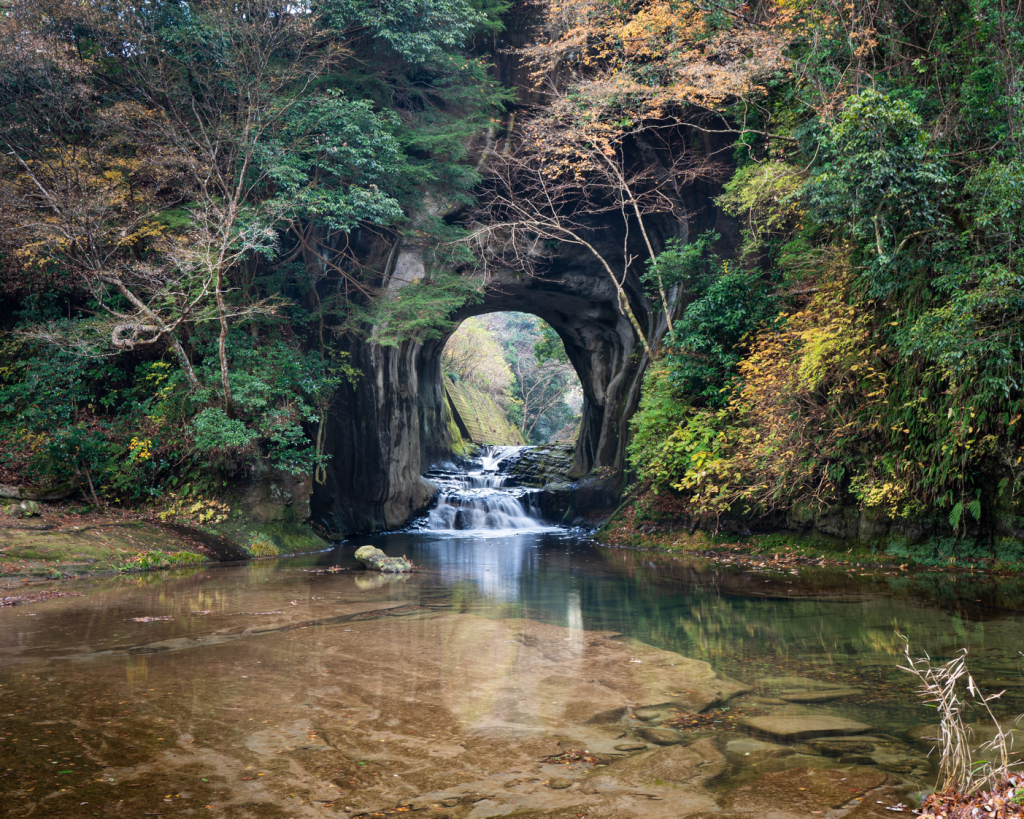
Kameiwa Cave. Photo by Big Ben in Japan.
2. Kameiwa Cave (Kimitsu)
This cave has been featured on National Geographic for the image of a heart that is reflected in the water twice a year. Although beautiful during any season, in autumn visitors can witness the cave’s opening surrounded by red and yellow autumn leaves.
Best time to go: Late November and early December
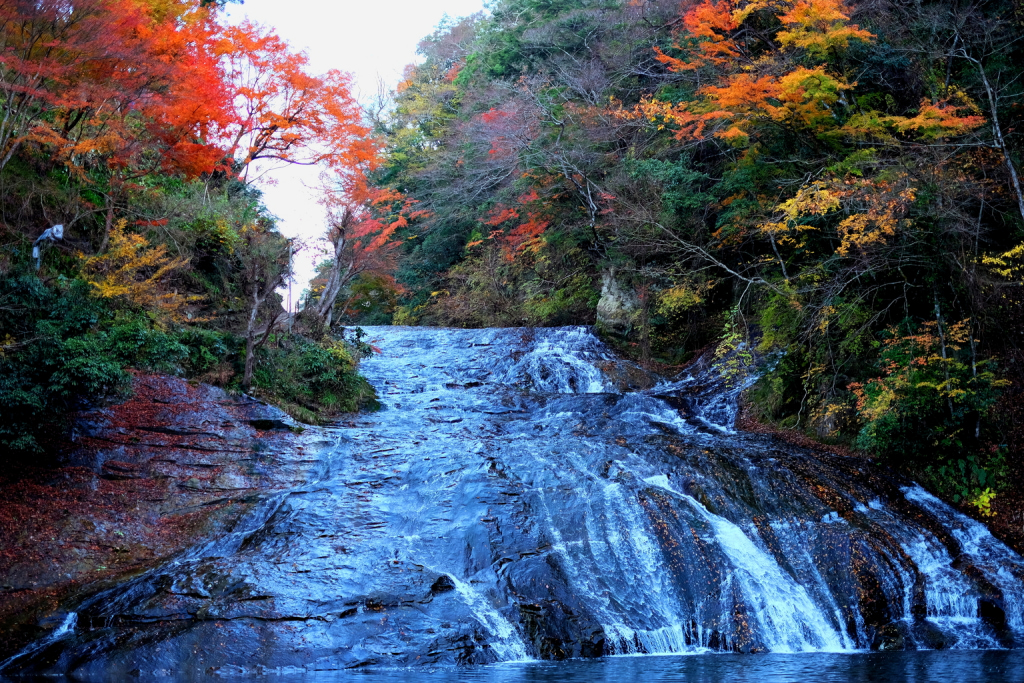
Awamata Waterfall. Photo by max max.
3. Awamata Waterfall (Ichihara)
This 100-meter-wide waterfall located in Yoro Valley is famous for its fall foliage. Visitors can stroll along the promenade and admire the breathtaking view of the waterfall with vivid red leaves framing it. They can also enjoy a barbeque at the riverside.
While in Ichihara, check out our guide of things to see and do there.
Best time to go: Late November and early December
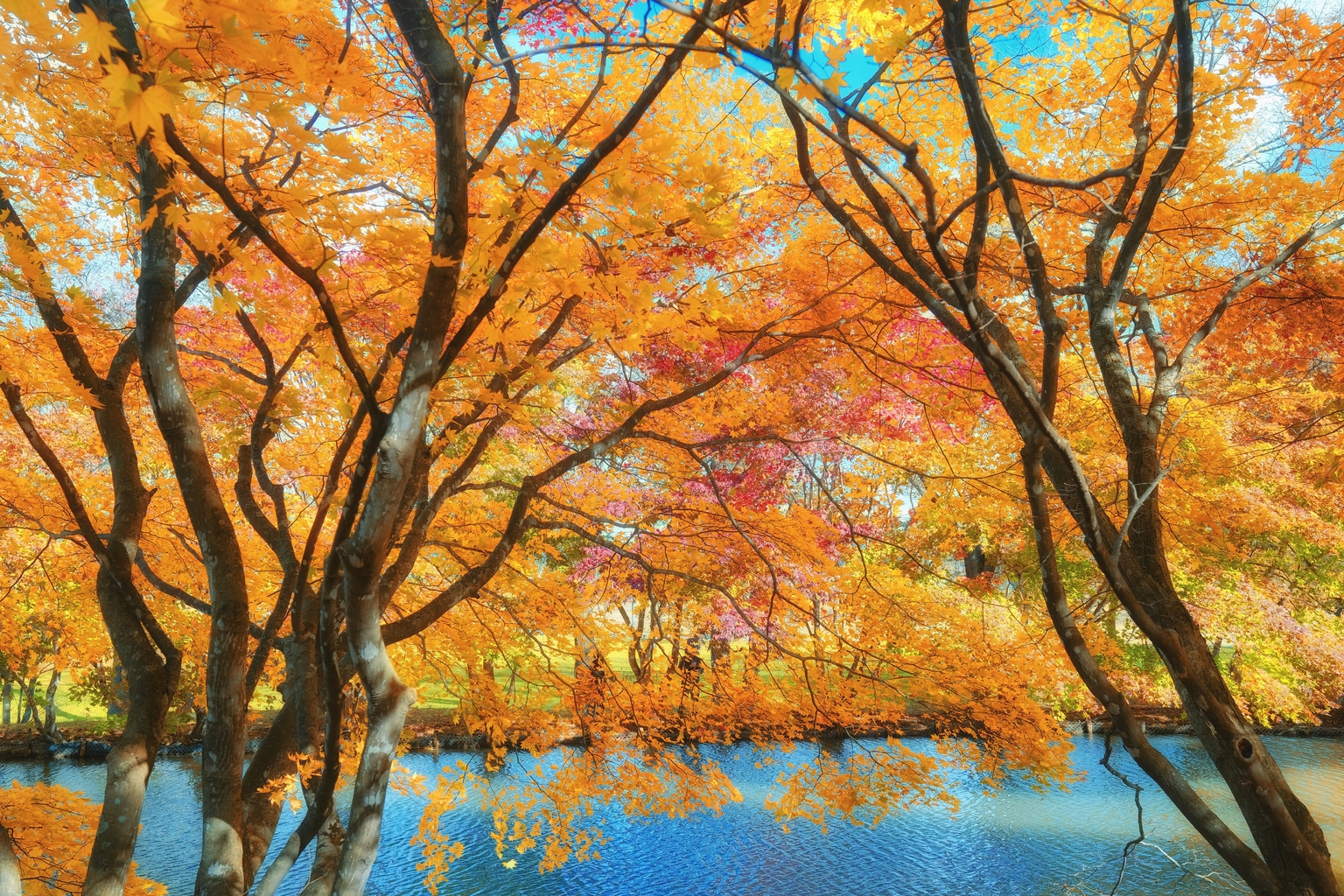
Shimizu Park
4. Shimizu Park (Noda)
This park is known for glorious seasonal landscapes. Its cherry blossoms bloom in early spring, azaleas in late spring and maple and ginkgo trees change colors in autumn. In addition to viewing the fall foliage, visitors can also do a whole host of fun outdoor activities in Shimizu Park. They can use the field athletics course, which is a complex of three different obstacle courses. People can also trout fish in the pond and barbeque. Outside of the gates of the park are a water park, petting zoo and stable with pony rides. Visitors can also camp overnight inside the park.
Best time to go: Late November and early December

Hondoji Temple
5. Hondoji Temple (Matsudo)
This temple is famous for its changing scenery every season. Depending on the season, visitors can observe beautiful cherry blossoms, hydrangeas or maple trees. In the autumn, there are 1,500 maple trees of three different types creating a complex color palette that adds to the depth of the scenery.
During the peak season, a ¥500 admission fee is charged.
Best time to go: Late November

Komatsuji Temple. Photo by max max.
6. Komatsuji Temple (Minamiboso)
Located deep in the mountains with a history of over 1,300 years, this is a temple that is dedicated to prayers for childbirth and easy delivery. It’s also a popular destination to view fall colors. Visitors can see brilliant red autumn leaves when they come by driving about 30 minutes from Futtsu Tateyama Expressway “Tomiura IC” or about eight minutes by taxi from JR Uchibo Line Chikura Station.
Best time to go: Late November to early December
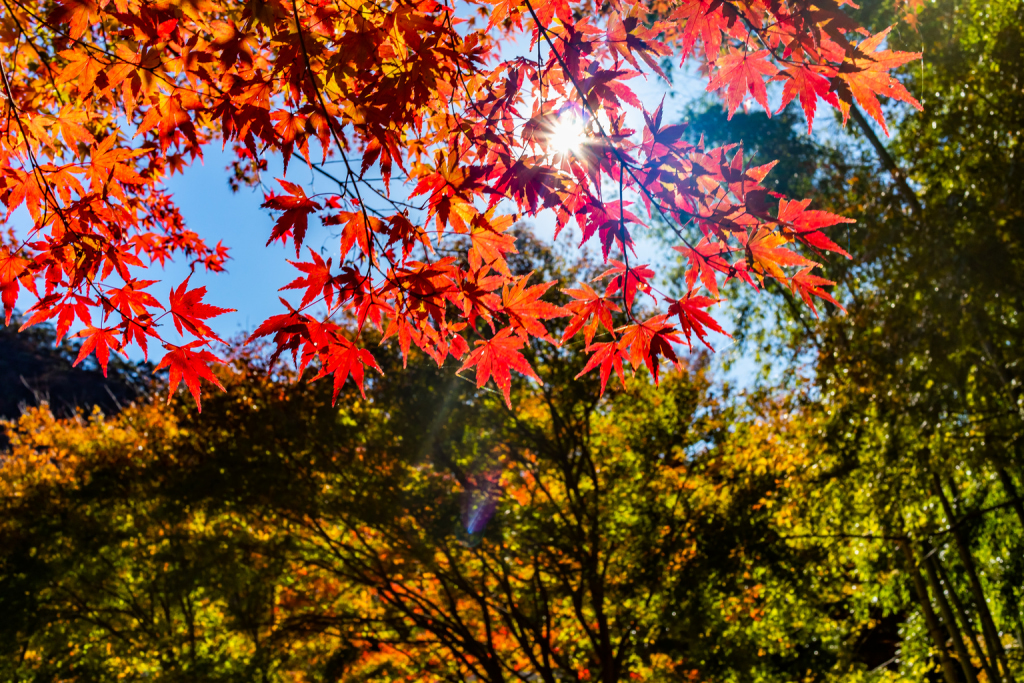
Momiji Road
7. Momiji Road (Futtsu)
Prefectural Road No. 182 is known as “Momiji Road,” since there are over 1,000 maple trees, making it one of the best places to view fall colors. It’s possible to drive or get here by taking the Boso Satoyama GO, a limited-time bus route that only operates on the weekends and national holidays during the autumn leaves season. Visitors can buy local products such as vegetables and roasted sweet potatoes from vendors along the road and relax in free rest areas.
Best time to go: Late November to early December

Izumi Nature Park. Photo by t.kunikuni.
8. Izumi Nature Park (Chiba City)
Visitors can enjoy hues of red, gold and orange enveloping the landscape in the fall. They can also stroll across Izumi Bridge, admire the reflection of the fiery red leaves in the duck pond and hike down trails to observe sunlight shining through the leaves.
Best time to go: Late November to early December
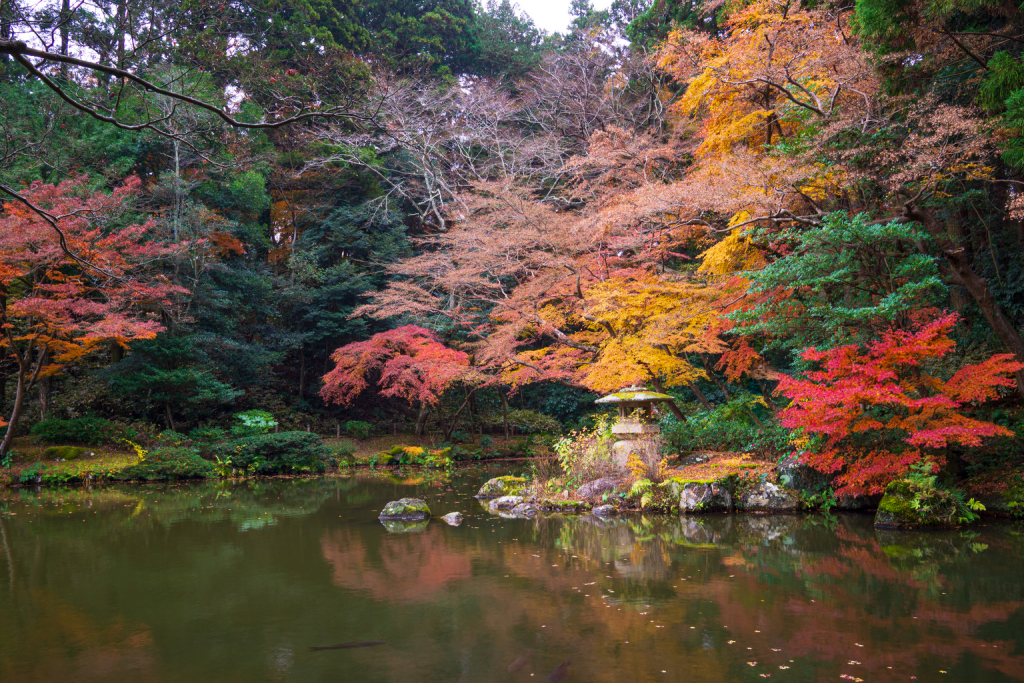
Naritasan Shinshoji Temple
9. Naritasan Shinshoji Temple (Narita)
Located in Naritasan Park, about 250 maple, oak and gingko trees turn red and gold at this temple with an elegant pond. Visitors can also attend the Naritasan Park Colored Leaves Festival, which usually includes a tea ceremony and the opportunity to play the koto, or Japanese harp, bamboo flutes and erhu, a Chinese two-stringed bowed instrument.
Best time to go: Mid-November to early December
10. Mihama-en (Chiba City)
This beautiful garden located in Makuhari Seaside Park incorporates natural Japanese elements, such as ponds, stone lanterns and bamboo fences alongside seasonal plants that make the garden enjoyable in any season. Visitors can relax in the tea room by the pond and enjoy sweets and matcha. The garden stands out in the autumn because of the seasonal light-up event, which illuminates the trees and lanterns. Visitors can also enjoy koto and violin performances and partake in a tea ceremony experience.
Best time to go: Late November

